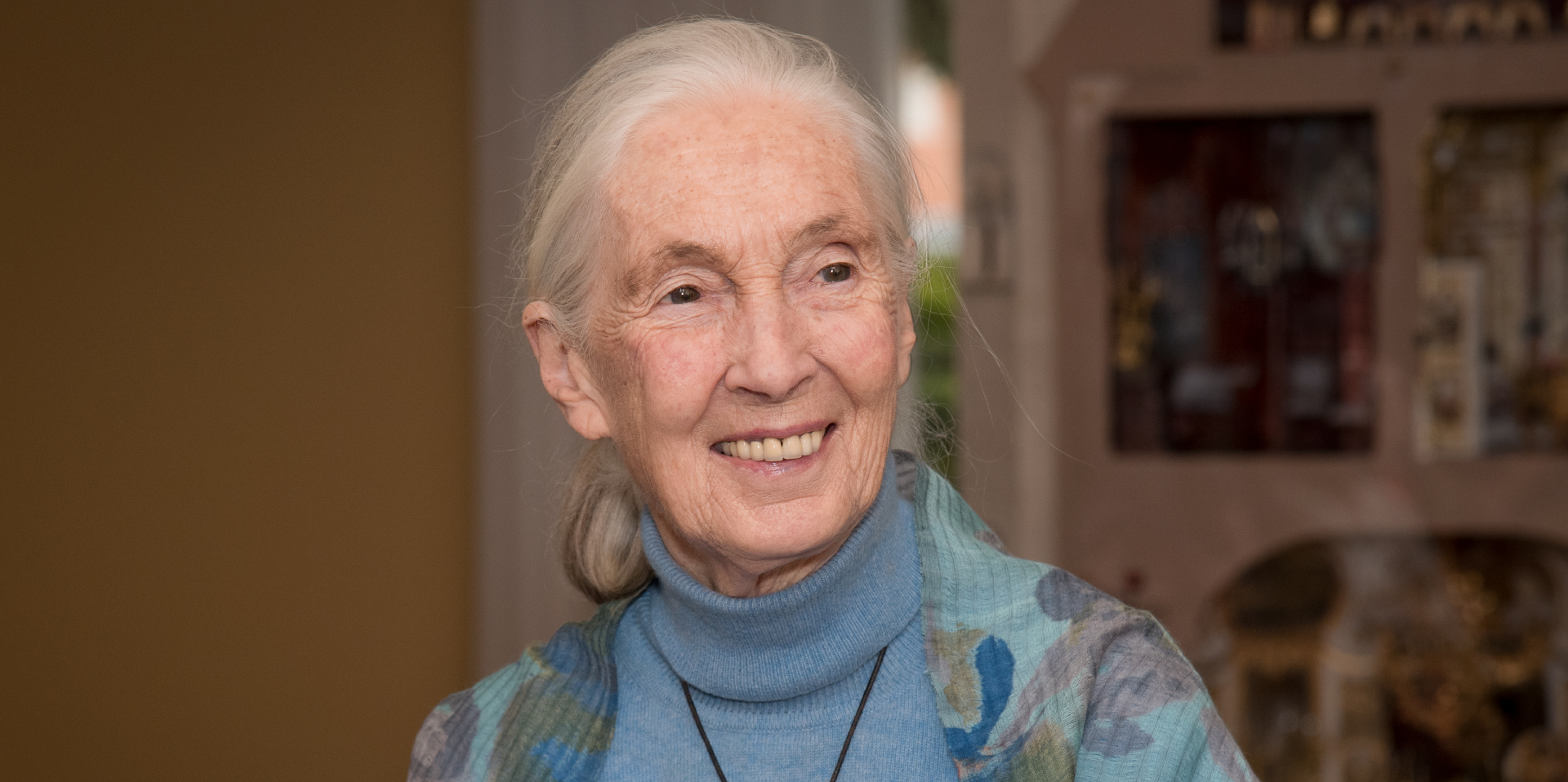Growing Up Scientist
By Cammi Clark
Two prominent female primatologists – Jane Goodall, Ph.D., and FAU’s Kate Detwiler, Ph.D. – tell similar stories of investigating the natural world as young girls with encouragement from supportive parents.
The two have worked in the forests of Gombe National Park, Tanzania, Africa, living among chimpanzees and conducted groundbreaking studies. For example, Goodall discovering that chimpanzees use tools; and Detwiler uncovering two distinct species of monkeys producing hybrid offspring.
On an invitation from Detwiler, Goodall recently spoke at FAU, emphasizing the importance of protecting species and the environment, encouraging everyone to do their part, and sharing stories about her continuous inquisitive spirit. Goodall added that her love of animals started when she was a child, reading books like “Dr. Doolittle” and “Tarzan and the Apes.” (“Tarzan married the wrong Jane,” she quipped.) But the iconic 85-year-old scientist credits her mother for getting her on the right track to becoming a scientist.
“Luckily enough, I had a mother who supported me,” Goodall said. “She didn’t even get mad when she came into my bedroom at night and found my bed full of Earth worms and Earth. She said, ‘Jane, you were looking at those worms as if you wondered how they walked without any legs.”
Goodall also shared a pivotal story from when she was 4 and spent hours hiding to watch a hen lay an egg. “I go into an empty hen house and I wait. And I wait. And I wait. Which is fine for me, but my poor mother had no idea. And yet, when she sees her little girl, who has been away for four hours, running towards the house, with shining eyes, instead of getting mad … she sat down to hear the wonderful story of how a hen lays an egg. ... If you think about that story, which is why I tell it again and again, it’s about the making of a little scientist — and a different mother might have crushed that early scientific curiosity and I might not have done what I’ve done.”
Like Goodall, Detwiler, associate professor in the Dorothy F. Schmidt College of Arts and Letters, was a precocious young scientist, who credits her parents with encouraging her curiosity. She grew up in a rural area of New Hampshire, in a house in front of a small pond that was home to many animals, including frogs. To a young child, a frog’s mating call might sound a bit like a duck quack, she said. “When I was a kid I kept saying, I’ve got to go find those ducks. So, I’d go out and look for the ducks, but they weren’t there,” quipped Detwiler, adding that, as a child, she spent a tremendous amount of time outside trying to catch and observe animals. She said she assumed she would follow in her father’s footsteps and become a medical doctor. Instead, she said, she had an “aha” moment in college when she discovered the science of animal behavior, which, of course, included Goodall’s chimpanzee research.
If you would like more information, please contact us at dorcommunications@fau.edu.
Kate Detwiler’s Discovery:
As an undergraduate, Detwiler participated in a semester abroad program in wildlife ecology and conservation in Africa, where she began working in Gombe National Park. In 1994, Detwiler’s research there led her to be the first to provide genetic evidence that two distinct species of monkeys inhabiting Gombe National Park, were mating and producing hybrid offspring. Using feces of red-tailed monkeys, blue monkeys and hybrids, Detwiler found that they all traced back to female red-tailed monkeys. For this lineage, it is the first time that science shows that not only is the DNA there, but so are the hybrids.
